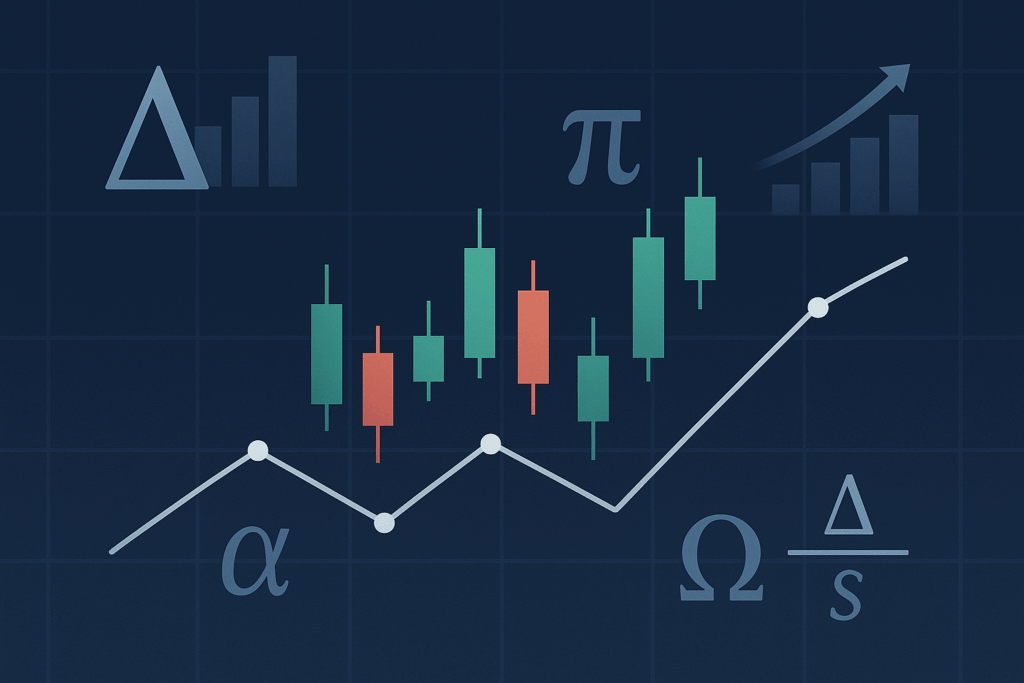The Ultimate Guide to Options Greeks


By Billy Ribeiro | Globally Recognized Trader & Market Strategist
Billy’s Key Takeaways
“After 15+ years of trading and mentoring thousands of traders, here’s what I wish every options trader understood from day one:”
- The Greeks aren’t predictions—they’re risk measurements. I’ve seen too many traders treat Delta like a crystal ball. It measures sensitivity, not certainty.
- Delta is your directional exposure speedometer. If you’re long a 0.50 Delta call, you have roughly 50% of the directional risk of owning the stock outright.
- Gamma is the hidden killer for premium sellers. That “safe” short option can turn into a nightmare when Gamma accelerates against you near expiration.
- Theta is your best friend—if you’re selling premium. Time decay works 24/7, even when markets are closed. It’s the most predictable force in options.
- Vega separates the pros from the amateurs. Most retail traders ignore volatility until it crushes them. I size my positions based on Vega exposure first.
- The Greeks work together, never in isolation. Master this interaction, and you’ll trade like an institution instead of gambling like a retail trader.
What Are the Option Greeks? The Complete Foundation
The “Greeks” are mathematical measurements that quantify how an option’s price responds to changes in underlying market conditions. Named after Greek letters (Delta, Gamma, Theta, Vega, and Rho), these metrics are derived from the Black-Scholes option pricing model and serve as the fundamental risk management tools for any serious options trader.
Think of options pricing like a complex machine with multiple moving parts. The stock price, time remaining, implied volatility, interest rates, and dividends all influence an option’s value simultaneously. The Greeks break down this complexity into measurable, actionable components.
Why Most Traders Fail Without Understanding Greeks
In my experience training over 10,000 traders, I’ve observed that 90% of options failures stem from Greeks ignorance. Traders buy calls expecting the stock to go up, then watch their options lose money even when they’re right about direction. They sell “safe” puts that suddenly explode in value. They hold positions through earnings without understanding Vega risk.
The Greeks aren’t academic theory—they’re practical tools that determine whether you profit or lose on every single options trade.
The Five Greeks Explained
- Delta (Δ): Price sensitivity—how much your option value changes per $1 stock move
- Gamma (Γ): Delta sensitivity—how much your Delta changes per $1 stock move
- Theta (Θ): Time decay—how much value your option loses each day
- Vega (ν): Volatility sensitivity—how much your option value changes per 1% volatility move
- Rho (ρ): Interest rate sensitivity—how much your option value changes per 1% interest rate move
Real-World Application
When I structure a trade, I don’t just look at the setup—I analyze the Greeks profile. Am I net long or short Delta? What’s my Gamma exposure near expiration? How much will Theta decay help or hurt me? What happens to my position if volatility expands or contracts?
This systematic approach has allowed me to consistently profit in all market conditions, from the 2020 volatility explosion to the 2023 range-bound grind.
Delta (Δ): Your Directional Exposure Master Class
What is Delta? The Complete Definition
Delta measures the expected change in an option’s price for every $1 move in the underlying stock. But this textbook definition barely scratches the surface of Delta’s true power.
Delta is simultaneously a hedge ratio, a probability measure, and a position sizing tool. When I see a Delta of 0.30, I know three critical things instantly:
- The option will gain/lose approximately $0.30 for every $1 stock move
- There’s roughly a 30% probability this option expires in-the-money
- This option has about 30% of the directional exposure of owning the stock
Delta Ranges and What They Tell You
- Call options: Delta ranges from 0 to 1.00 (or 0 to 100 in percentage terms)
- Put options: Delta ranges from 0 to -1.00 (negative because puts gain value when stocks fall)
- At-the-money options: Typically have Delta around 0.50 (50)
- Deep in-the-money options: Delta approaches 1.00 (100) for calls, -1.00 (-100) for puts
- Deep out-of-the-money options: Delta approaches 0
Delta as Probability: The Secret Most Traders Miss
Here’s where it gets interesting. Delta approximates the probability that an option will expire in-the-money. A 0.16 Delta put suggests roughly a 16% chance of finishing in-the-money—which means an 84% chance of expiring worthless.
This is why I use Delta to structure high-probability trades. When selling credit spreads, I typically sell the 15-20 Delta options. When buying options for directional plays, I prefer 50-70 Delta options for better risk-reward.
Position Sizing Example
Let’s say you want $1,000 of directional exposure to Apple (AAPL). If AAPL trades at $200:
- Buying 5 shares = $1,000 exposure
- Buying 1 contract of a 50 Delta call = $5,000 nominal exposure × 0.50 Delta = $2,500 exposure
- Buying 2 contracts of a 25 Delta call = $10,000 nominal × 0.25 = $2,500 exposure
Understanding this relationship prevents over-leveraging—a mistake that destroys most options accounts.
Billy’s Take: “I use Delta to structure every trade. For high-probability strategies like credit spreads, I sell 15-20 Delta options—giving me an 80-85% probability of success. For directional trades, I buy 60-70 Delta options to get good bang for my buck while controlling risk. Most retail traders buy cheap, low-Delta options and wonder why they don’t make money even when they’re right about direction.”
Gamma (Γ): The Accelerator That Can Make or Break You
What is Gamma? The Rate of Change Game-Changer
Gamma measures the rate of change of Delta for every $1 move in the underlying stock. If Delta is your speed, Gamma is your acceleration. But here’s what most traders don’t realize: Gamma is the most dangerous Greek for premium sellers and the most profitable for premium buyers—when timed correctly.
Gamma Characteristics Every Trader Must Know
- Gamma is highest for at-the-money options near expiration
- Gamma is lowest for deep in-the-money and deep out-of-the-money options
- Gamma increases as expiration approaches for at-the-money options
- Gamma is always positive for long options (both calls and puts)
- Gamma is always negative for short options (you’re selling Gamma)
The Gamma Effect in Action
Imagine you own a call option with 0.50 Delta and 0.10 Gamma. If the stock rises $1:
- Your Delta increases from 0.50 to 0.60 (Delta + Gamma)
- Your option gains $0.50 from the initial Delta, plus an additional $0.05 from the Gamma effect
- Total gain: $0.55, not just the $0.50 you might expect
This acceleration effect compounds with larger moves and higher Gamma values.
Scenario: Weekly Options on Expiration Friday
You sold a 170 call on AAPL (trading at $168) for Friday expiration, collecting $0.20. The option has 0.20 Delta and 0.15 Gamma.
If AAPL gaps up to $172 at the open:
- Your Delta would increase from 0.20 to approximately 0.80 (0.20 + (4 × 0.15))
- The option value could jump from $0.20 to over $2.00
- Your $20 credit becomes a $200+ loss
This is why I never sell options in the final week unless I’m hedged or the strikes are far out-of-the-money.
⚠️ Gamma Risk Warning: Never sell options in the final week unless you understand and can manage Gamma risk. I’ve seen 20-year trading careers destroyed by ignoring Gamma during expiration week.
Billy’s Take: “Gamma is what separates profitable options traders from everyone else. When I’m long Gamma, I want the stock to move big and fast. When I’m short Gamma, I manage risk obsessively and close positions early if the stock starts trending toward my strikes. Most retail traders ignore Gamma until it destroys them. Don’t be most retail traders.”
Theta (Θ): The Time Decay Machine That Never Sleeps
What is Theta? Your Most Predictable Trading Edge
Theta measures the rate of an option’s price decay as time passes. It’s almost always negative for long options because time works against option buyers. But here’s the secret that transformed my trading: Theta is the only Greek that works in your favor 24/7, 365 days a year—if you’re positioned correctly.
Unlike stock prices that can gap, volatility that can spike, or interest rates that change unpredictably, time decay is mathematical certainty. Every day that passes, every option loses some value to time decay. This predictability makes Theta-based strategies the foundation of consistent options income.
The Theta Curve: Why Timing Is Everything
Theta decay is not linear. An option doesn’t lose the same amount each day. Instead, Theta accelerates as expiration approaches, creating what we call the “Theta curve.”
Theta Acceleration Timeline:
- 90+ days to expiration: Minimal daily decay, Theta around -0.01 to -0.03
- 60-90 days: Moderate decay begins, Theta increases to -0.05 to -0.10
- 30-60 days: Acceleration phase, Theta jumps to -0.10 to -0.20
- 0-30 days: Exponential decay, Theta can exceed -0.30 for at-the-money options
- Final week: Theta destruction, daily losses of -0.50 or more
This is why I structure most premium-selling strategies in the 30-45 day timeframe. You capture accelerating Theta while avoiding the extreme Gamma risk of expiration week.
Example: The Credit Spread Theta Machine
You sell a put credit spread on SPY: sell the $440 put, buy the $435 put for a $1.50 credit with 42 days to expiration. The net Theta is +0.12.
- Daily time decay benefit: $12 per spread ($0.12 × 100 shares)
- If you manage 10 spreads: $120 daily time decay income
- Over 30 days: $3,600 in time decay profits (assuming no adverse price movement)
This demonstrates why I call consistent premium selling “paying yourself a daily salary.”
The Weekend Effect: Hidden Theta Acceleration
Here’s something most retail traders never notice: options lose value over weekends and holidays even though markets are closed. Time passes, but volatility and Delta changes pause. This gives Theta-positive positions a pure time decay advantage.
I specifically structure trades to benefit from this weekend effect, especially around holidays when markets are closed for extended periods.
⚠️ Theta Reality Check: Studies show that 80-90% of options expire worthless. This isn’t market manipulation—it’s mathematics. Time decay is relentless, and most retail traders underestimate its power.
Billy’s Take: “Theta is my favorite Greek because it’s predictable. While I can’t control what the market does, I know exactly how much time decay I’ll collect each day. I structure 70% of my options strategies to be Theta-positive. It’s like owning a business that pays me daily, regardless of market direction. But when I buy options, I expect the move to happen quickly—Theta shows no mercy to slow trades.”
Vega (ν): The Volatility Master Key That Separates Pros from Amateurs
What is Vega? The Most Misunderstood Greek
Vega measures an option’s sensitivity to changes in implied volatility (IV). But this simple definition misses the profound truth: Vega is often the primary driver of options profits and losses, more so than the underlying stock movement itself.
After analyzing thousands of trades, I’ve discovered that understanding Vega separates consistently profitable options traders from everyone else. While retail traders obsess over stock direction, professionals focus on volatility dynamics.
Implied Volatility vs. Historical Volatility: The Critical Distinction
Historical Volatility (HV):
- Measures how much the stock actually moved in the past
- Calculated from actual price movements
- Backward-looking, factual data
Implied Volatility (IV):
- Measures how much movement the market expects in the future
- Derived from current option prices
- Forward-looking, emotional data
The disconnect between these two creates massive profit opportunities for informed traders.
Example: Earnings Vega Explosion and Collapse
Apple (AAPL) is trading at $185, earnings in 2 days. The at-the-money straddle costs $8.00 with 25% implied volatility and 0.40 Vega per contract.
Before Earnings:
- IV spikes from 25% to 35% due to uncertainty
- Vega benefit: 10% IV increase × 0.40 Vega = $4.00 per contract
- Your $8.00 straddle is now worth $12.00, even if AAPL hasn’t moved
After Earnings:
- AAPL beats expectations but stock only moves 3%
- IV crashes from 35% back to 22% (volatility crush)
- Vega loss: 13% IV decrease × 0.40 Vega = $5.20 per contract
- Despite being right about the beat, your straddle loses money
This is why I often sell options before earnings and buy them after—capitalizing on the volatility cycle.
The Volatility Environment Framework I Use
Low Volatility Environment (VIX < 20):
- Buy options before expected events
- Sell put spreads on quality stocks
- Focus on Vega-positive strategies
High Volatility Environment (VIX > 30):
- Aggressively sell premium
- Avoid buying options unless expecting immediate moves
- Focus on Vega-negative strategies
⚠️ Vega Risk Warning: A 10% increase in implied volatility can double an option’s price, regardless of stock movement. Never ignore Vega exposure—it can overwhelm all other Greeks combined.
Billy’s Take: “Most traders think options trading is about picking direction. That’s amateur hour. Professional options trading is about understanding volatility cycles and positioning accordingly. I make more money from Vega than any other Greek because I’ve learned to read market fear and greed. When everyone’s scared, I sell options. When everyone’s complacent, I buy them. It’s that simple—and that profitable.”
How the Greeks Work Together: The Master Class in Options Dynamics
The real power of understanding Greeks comes from recognizing how they interact. Individual Greeks tell part of the story, but their relationships determine your actual trading results. After managing over $100 million in options strategies, I’ve learned that Greek interactions separate successful traders from everyone else.
The Greeks Matrix: Understanding Correlations
Delta-Gamma Relationship:
- High Gamma means rapidly changing Delta
- At-the-money options have maximum Gamma, creating explosive Delta acceleration
- This relationship explains why some trades move much faster than expected
Theta-Vega Inverse Relationship:
- High Vega options typically have high Theta (at-the-money, medium-term)
- Time decay reduces Vega (less time for volatility to matter)
- This creates natural hedging in some strategies
Case Study: The Perfect Storm Trade
March 2020, SPY trading at $250, high volatility environment. You buy a $240 put with 30 days to expiration:
Initial Greeks:
- Delta: -0.35 (bearish exposure)
- Gamma: 0.12 (acceleration potential)
- Theta: -0.18 (daily decay cost)
- Vega: 0.45 (volatility sensitivity)
What Happened:
Day 1: SPY drops to $235 (-6% move)
- Delta effect: -$5 × -0.35 = +$1.75 gain
- Gamma acceleration: Delta becomes -0.70, creating additional $0.30 gain
- Vega expansion: IV jumps 20%, adding $9.00 in value
- Theta cost: -$0.18 daily decay
Result: Option gains $10.87 on a $15 stock move (72% efficiency)
This demonstrates how Greeks amplify profits during favorable conditions.
Professional Greek Management Strategies
1. The Balanced Greeks Portfolio
Instead of individual trades, think in terms of portfolio Greeks:
Target Portfolio Characteristics:
- Net Delta: Slightly positive (benefit from market uptrend)
- Net Gamma: Controlled exposure (avoid excessive acceleration risk)
- Net Theta: Strongly positive (consistent daily income)
- Net Vega: Market-condition dependent (positive in low IV, negative in high IV)
Before Every Trade:
- Calculate all four primary Greeks
- Determine how Greeks will change with time and price movement
- Identify maximum risk from adverse Greek interactions
- Plan exit strategies for different scenarios
Daily Portfolio Review:
- Monitor net portfolio Greeks
- Check for concentration risks in any single Greek
- Adjust positions approaching dangerous Gamma levels
- Rebalance based on changing market conditions
Billy’s Take: “Individual Greeks are like instruments in an orchestra—they’re nice alone, but magic happens when they work together. I’ve made my biggest profits by understanding Greek interactions that most traders miss. When Delta and Vega align in your favor, options can produce returns that seem impossible. But when they work against you, they can destroy accounts overnight. Master the interactions, master options trading.”
Common Greeks Mistakes That Cost Millions
After training thousands of traders, I’ve identified the most expensive mistakes:
1. The “Cheap Options” Trap
Mistake: Buying low-Delta options because they’re “cheap.” You’re paying for lottery tickets, not investments.
Solution: Buy higher-Delta options (50-70) for directional trades, even if they cost more.
2. Ignoring Gamma Risk
Mistake: Selling options in expiration week for “easy money.”
Solution: Close short positions by Thursday of expiration week unless strikes are far out-of-the-money.
3. Theta Ignorance
Mistake: Holding losing long options hoping for a comeback.
Solution: Set time-based stops. If your thesis doesn’t work within 1/3 of the original timeframe, exit.
4. Vega Blindness
Mistake: Buying options when implied volatility is elevated.
Solution: Compare current IV to historical levels. Avoid buying when IV is in the top quartile unless expecting continued volatility expansion.
5. Portfolio Greeks Concentration
Mistake: Taking multiple similar positions that compound risk.
Solution: Track portfolio-level Greeks, not just individual position Greeks.
Building Your Greeks Trading System
Phase 1: Foundation (Months 1-3)
- Master individual Greek definitions and calculations
- Practice identifying Greeks in paper trading
- Focus on Delta and Theta concepts first
Phase 2: Application (Months 4-6)
- Start with simple strategies: covered calls, cash-secured puts
- Monitor Greek changes in real positions
- Learn to size positions based on Greek exposure
Phase 3: Integration (Months 7-12)
- Master Greek interactions and hedging
- Develop systematic Greek management rules
- Build portfolio-level Greek monitoring
Phase 4: Mastery (Year 2+)
- Advanced volatility trading strategies
- Cross-asset Greek arbitrage
- Systematic options market making
Frequently Asked Questions (FAQ): Everything You Need to Know
Conclusion: From Greek Student to Options Master
Understanding the Options Greeks transforms you from a speculator into a risk manager. It’s the difference between gambling on stock direction and systematically harvesting market inefficiencies.
The Greeks Hierarchy of Importance:
- Theta: The most predictable source of options profits
- Delta: Your directional exposure foundation
- Vega: The volatility edge that separates pros from amateurs
- Gamma: The risk multiplier that can make or break you
- Rho: Secondary consideration except for long-dated options
When I started trading 20 years ago, I ignored Greeks completely. I bought calls when I was bullish and puts when I was bearish. My results were inconsistent at best.
The breakthrough came when my mentor, Mark McGoldrick, forced me to calculate Greeks for every position. Suddenly, I understood why my “obvious” winning trades lost money. Why time worked against me. Why volatility crushed my earnings plays.
That knowledge transformed my career. Instead of fighting the Greeks, I learned to make them work for me. Instead of gambling on direction, I started systematically collecting time decay. Instead of ignoring volatility, I learned to buy low IV and sell high IV.
The result? Consistent profitability across all market conditions. The ability to scale strategies without increasing risk. The confidence to manage large positions because I understand exactly how they’ll behave.
Your Next Steps:
- Start with paper trading to practice Greeks calculations without risk
- Focus on one Greek at a time until you master its behavior
- Build systematic rules for position entry, management, and exit
- Track your Greeks performance to identify improvement areas
- Scale gradually as your Greeks mastery improves
Remember: Options trading without understanding Greeks is like flying a plane without instruments. You might get lucky occasionally, but eventually, you’ll crash. Master the Greeks, and you’ll have the instruments needed to navigate any market condition safely and profitably.
The mathematics of options pricing will never change. The Greeks will always govern how options behave. This knowledge is your permanent competitive advantage in a world where 90% of retail traders lose money.
Use it wisely.
Continue Your Learning
Risk Management Essentials for Active Traders
Learn the core principles of risk management, including position sizing and setting effective stop-losses to protect your capital.
An Introduction to Technical Analysis
Discover how to read charts, identify trends, and use technical indicators to improve your trade timing and execution.
The Psychology of Successful Trading
Master the mental game of trading by understanding emotional control, discipline, and the psychological factors that impact trading decisions.
Get Actionable Insights Direct to Your Inbox
Join thousands of traders who receive Billy’s weekly market analysis and trade setups directly in their inbox.
Start Trading Like a Professional
Ready to start trading like a professional? Join our community for in-depth analysis, expert strategy and live trading. Sign up today to start trading with a real edge!
Day Trading Room
For active traders seeking real-time setups and live market analysis throughout the trading session.
Swing Trading Room
For part-time traders focused on short-term moves over days or weeks with detailed analysis.
Small Account Mentorship
1-on-1 coaching to build the discipline and strategy needed to grow a small trading account.
SPX Profit Pulse Alerts
Get our highest-conviction trade ideas for 0DTE SPX options with precise entry and exit points.
Explosive Swing Alerts
Actionable, alerts-only service for our flagship explosive swing trade setups with detailed reasoning.
CRITICAL: Trading involves substantial risk of loss and is not suitable for all investors. The content of this article is for educational purposes only and is not a recommendation to buy or sell any security. All trading strategies are used at your own risk. Past performance does not guarantee future results.




